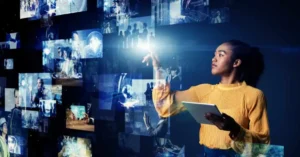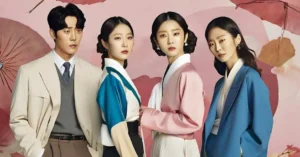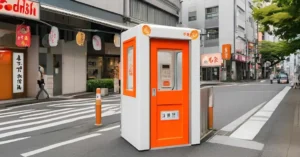The Central Jakarta District Court’s Panel of Judges delivered a judgment on December 2, 2020, stating that Grand Indonesia Mall must compensate for the loss of Rp1,000,000,000 (one billion Rupiah) as a result of the breach.
The copyright for the welcome monument sketch is filed in the name of Henk Ngantung, an artist and former Governor of Jakarta from 1964 to 1965, and the sketch was created by Henk Ngantung in 1962.
The drawing is covered by Law Number 28 of 2014 regarding Copyright (“Copyright Act“) notably Article 40 section (1) letter f, which states that fine art works in any forms such as paintings, drawings, engravings, calligraphy, carvings, sculptures, or collage are protected by the law.
Furthermore, the sketch has been granted Copyright Certificate Number 46190 by the Ministry of Law and Human Rights.
Henk Ngantung died in 1990, according to the Indonesian Visual Art Archive. Aside from that, copyright protection is as stated in Article 58 section (1) Copyright Act, which states:
“Copyright protection for Works of:
a. books, pamphlets, and all other written works;
b. talks, lectures, speeches, and other similar Works;
c. props made for education and scientific purposes;
d. songs or music with or without lyrics;
e. dramatic works, musical dramas, dances, choreography, puppet shows, pantomimes;
f. fine art works in all forms such as paintings, drawings, engravings, calligraphy, sculpture, sculptures, or collage;
g. architectural works;
h. maps; and
i. batik art works or other pattern arts,
endures for a term consisting of the life of the Author and 70 (seventy) years after the Author’s death, commencing from 1st January of the year following the event.,”
The article explains that the welcome monument sketch is still protected by copyright.
What can we take away from this?
Copyright, as we know, is the creator’s exclusive right that emerges automatically based on declaratory principles. Once the work is produced in a physical form without reducing restrictions in accordance with the terms of laws and regulations.
Although copyright emerges automatically as indicated by this concept, creators must always register their work. Because it is difficult to prove the work of the individual if it is not registered.
Moreover, if another party uses someone’s creation without permission, it will be very detrimental to that person if there is no evidence that the copyright is protected by the state to sue the party who uses the work.
The importance of registering a copyright is to ensure that the work created by the creator’s hard work is legitimate in the eyes of the law and that the state which protects these rights.
According to the explanation of article by article UUHC, Article 4 clarifies what is meant by exclusive rights are rights that are solely intended for the Creator, so that no other party may take benefit of the right without the Author’s consent. In other words, the copyright holder has the right to utilize his invention as well as the right to prevent others from utilizing it.
Furthermore, this copyright infringement case educates corporate entities to pay greater attention and observe Indonesian Intellectual Property Law. Of course, since intellectual property rights is protected in Indonesia, there will be penalties for intellectual property rights offenders. Copyright holders can seek compensation through lawsuits against parties who violate their rights. In addition, Copyright Act also regulates criminal sanctions for people who violate copyright.
Article 113 Copyright Act, specifically in section (2) and (3), explains:
“(2) Every Person who unlawfully infringes the economic rights as referred to in Article 9 Section (1) point i for Commercial Use shall be sentenced to imprisonment for up to 1 (one) year and/or fine up to Rp100,000,000 (one hundred million rupiahs).”
“(3) Every Person who unlawfully and/or without permission of the Author or the Copyright holder infringes the economic rights of the Author as referred to in Article 9 section (1) point c, point d, point f, and/or the point h for Commercial Use shall be sentenced to imprisonment for up to 3 (three) years and/or fine up to Rp500,000,000.00 (five hundred million rupiahs).”
From the article mentioned above, the section (2) explains a violation of the economic rights of the creator which is the right to translate the work, adapt, arrange, or transform the work, the performance of the work, and the communication of the work. While paragraph (3) explains a sanction for violating the creator’s economic rights which is the right to publish the work, copy the work in all its forms, distribute the work or copies thereof, and announce the work.
Regarding the case as described previously, it would be better to replace the logo of Grand Indonesia Mall. While in the replacement process, every aspect of the logo must be carefully considered. Creating a logo is not easy, because it is the result of the intellectual ability which is created by the expertise. However, it would be very unfortunate if the creation of a logo that was supposed to bring profits to business entities turned out to be a loss.
Source:
1. Law Number 28 of 2014 regarding Copyright
4. http://archive.ivaa-online.org/pelakuseni/henk-ngantung-1



